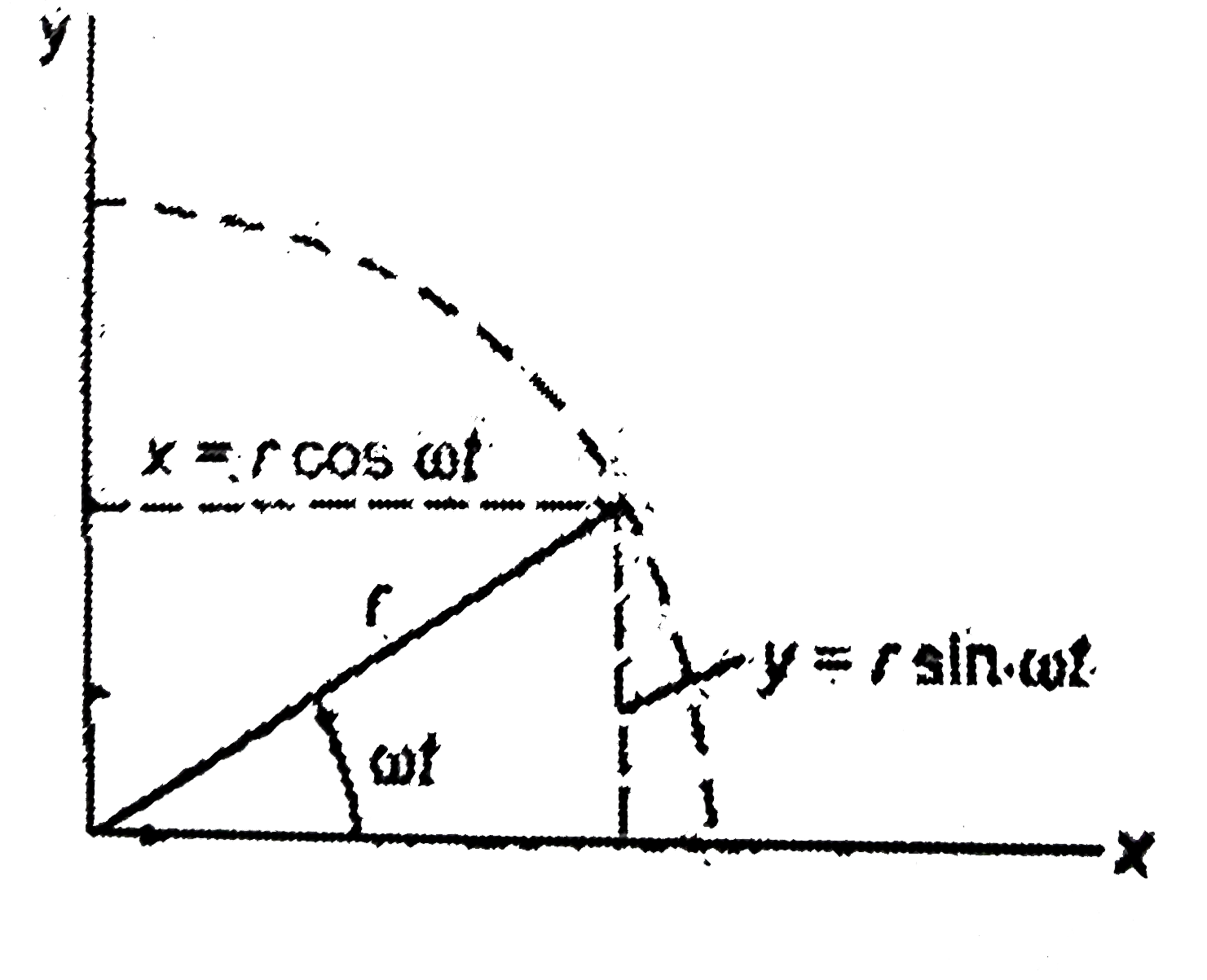A particle is moving with velocity →v=k(yˆi+xˆj), where k is a constant . The genergal equation for its path is
(a) y^1 = x + constant
(b) xy=cosntant
(c ) y^2 = x^2 + constatn
(d) y =x^2 + constant
The correct Answer is:C
→v=K(yˆI+xˆj) or vxˆi+vyˆj=K(yˆi+xˆj)
:. vx=Ky and vy=Kx
(dx)(dt)=Ky or dx=Kydt x=Kyt ….(i)
dydt=Kx or dy=Kxdt
or y=Kxt ….(ii)
From (i0, t=xKy
From (ii), y=Kx(xKy)+aconstant<bR>or y^2 = x^2 + a constant.
Topper's Solved these Questions
- BOOK - PRADEEPCHAPTER - KINEMATICSEXERCISE - 4 NCERT multiple Choice10videos
KINEMATICS
- BOOK - PRADEEPCHAPTER - KINEMATICSEXERCISE - 4 NCERT Integer type4videos
KINEMATICS
- BOOK - PRADEEPCHAPTER - KINEMATICSEXERCISE - 2 NCERT multiple15videos
KINEMATICS
- BOOK - PRADEEPCHAPTER - GRAVIATIONEXERCISE - Assertion-Reason Type Questions19videos
GRAVIATION
- BOOK - PRADEEPCHAPTER - LAWS OF MOTIONEXERCISE - Assertion- Reason Type Questions17videos
LAWS OF MOTION
Similar Questions
Knowledge Check
- Question 1 - Select One
A particle is moving in a plane with velocity given by →u=u0ˆi+(aωcosωt)ˆj, where ˆi and ˆj are unit vectors along x and y axes respectively. If particle is at the origin at t=0. Calculate the trajectory of the particle :-
Ay=asin(u0ωx)By=asin(ωxu0)Cy=1a.sin(u0ωx)Dy=1a.sin(ωxu0) - Question 2 - Select One
A particle is moving with a constant acceleration →a=ˆi−2ˆjm/s2 and instantaneous velocity →v=ˆi+2ˆj+2ˆkm/s then rate of change of speed of particle 1 second after this instant will be :
A√5m/s2B√3m/s2C√10m/s2DNone of these - Question 3 - Select One
A particle has initial velocity →v=3ˆi+4ˆj and a constant force →F=4ˆi−3ˆj acts on the particle. The path of the particle is :
Astraight lineBparabolicCcircularDelliptical
Consider a particle moving in the x−y plane according to r=r(cosωtˆi+sinωtˆj), where r and ω are constants. Find the trajectory, the velocity, and the acceleration.
 View Solution
View SolutionThe position vector of a particle is given by →r=kcosωˆi+ksinωˆj=xˆi+yˆj, where k and ω are constants and t time. Find the angle between the position vector and the velocity vector. Also determine the trajectory of the particle.
View SolutionA particle is moving with speed 6m/s along the direction of →A=2ˆi+2ˆj−ˆk, then its velocity is :
View SolutionA plane mirror is moving with velocity 4(ˆi)+5(ˆj)+8(ˆk). A point object in front of the mirror moves with a velocity 3(ˆi)+4(ˆj)+5(ˆk). Here, ˆk is along the normal to the plane mirror and facing towards the object. The velocity of the image is
View SolutionA particle moves with a velocity (5ˆi+3ˆj+6ˆk)m/s under the influence of a constant force (5ˆi+5ˆj+10ˆk)N. The instantaneous power applied to the particle is
View Solution

